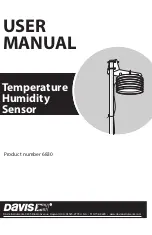
CHAPTER 3: INSTALLATION
WIRING
F35 MULTIPLE FEEDER PROTECTION SYSTEM – INSTRUCTION MANUAL
3-23
3
Figure 3-20: Typical contact input DC circuit
The presence of the impedance path (R1) across the contact output allows the stray (distributed) capacitance C1 to charge
as shown, thus developing a voltage across the contact input enough to momentarily operate the input while the
capacitance discharges in the presence of DC ground on the positive terminal of the battery.
The duration of the discharge depends on the value of the distributed capacitance, the initial voltage of the distributed
capacitance, and the input impedance of the contact input. If the duration is greater than the debounce time setting, then
the contact input operates.
The application example that follows describes how to mitigate this problem by connecting a resistor across the contact
input, as shown in the next figure, or by adjusting the debounce time setting to a value greater than the discharge time to
prevent spurious operation of the contact input only if the voltage (with output open) across the contact input due to trickle
current is less than the threshold voltage. This operation of contact inputs also can be prevented by using the Auto-Burnish
contact inputs or contact inputs with active impedance.
Figure 3-21: Contact input connected to a contact output with resistor (R2) across the input
















































